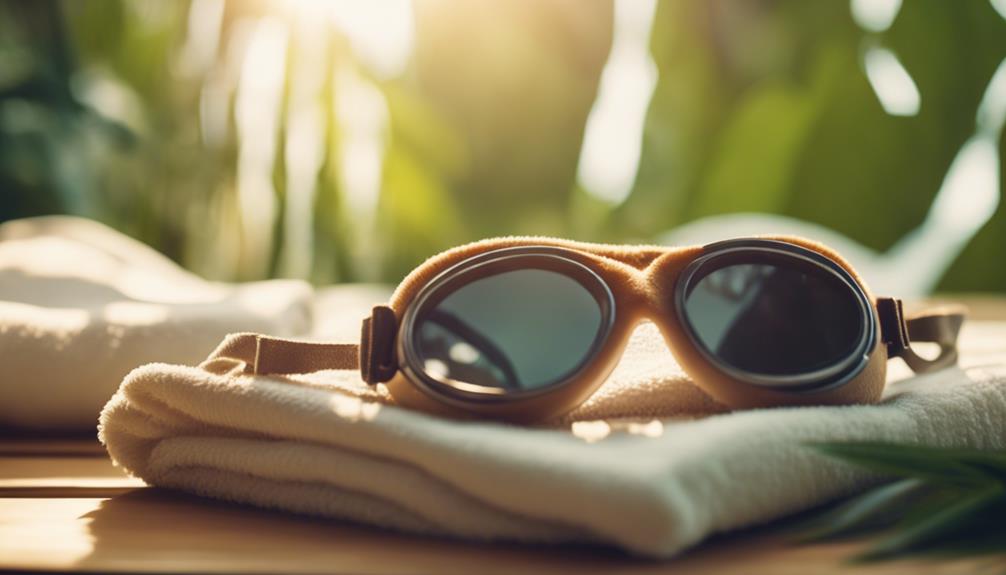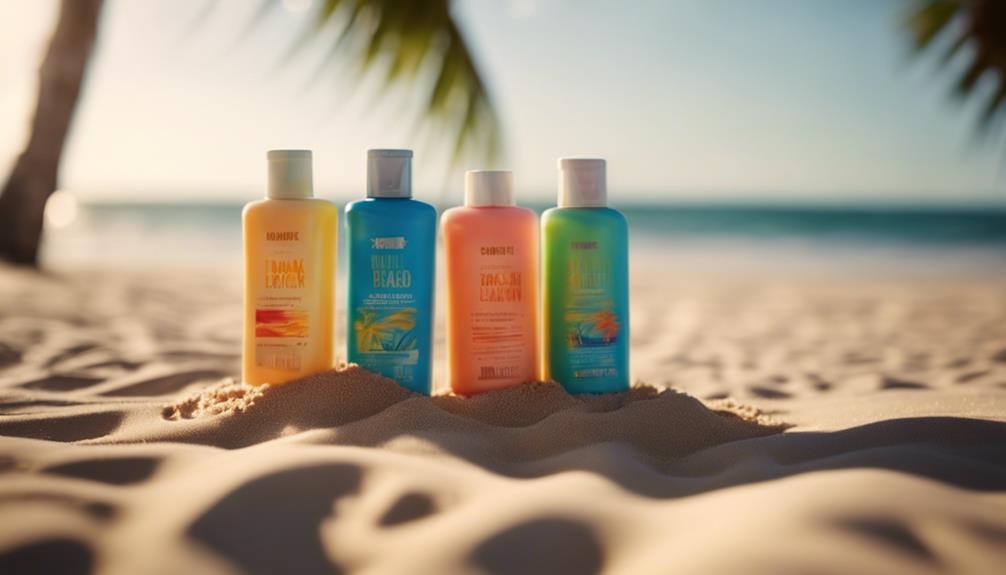To ensure proper protection for your eyes while using tanning beds, it is important to invest in high-quality goggles that block over 99% of UVA and UVB rays. Consider options such as Super Sunnies Evo, which provides a secure fit and is FDA compliant. The Super Sunnies Evo Flex Soft also includes an anti-fog coating for clarity during your tanning session. Choose the EVO FLEX Sunnies for smaller face shapes or the Slim Flex for a comfortable strapless design. Prioritizing both fit and protection will improve your tanning experience. For more information on selecting the best eyewear for tanning safety, continue reading.
Key Takeaways
- Super Sunnies EVO Flex: Blocks over 99.9% UVB and 99% UVA, ensuring optimal eye protection during tanning sessions.
- Super Sunnies Evo Flex Soft: Features an anti-fog coating for clear visibility and effective UV protection, available in an affordable 2-pack.
- EVO FLEX Sunnies: Specifically designed for smaller face shapes, providing a secure fit and high-quality UV protection.
- Super Sunnies Slim Flex: A comfortable strapless option that effectively protects against UV rays while allowing freedom of movement.
Importance of UV Protection
Protecting your eyes from UV rays is vital, as exposure can lead to serious damage like cataracts and macular degeneration.
When you tan, even if the sun isn't shining, harmful UV rays are still present. Tanning goggles minimize this exposure, creating a barrier that helps safeguard your vision.
Regular use of quality goggles reduces the risk of long-term eye health issues and guarantees you enjoy tanning safely. It's essential to choose goggles that block over 99% of UVA and UVB rays.
Following FDA regulations ensures that the goggles you select meet safety standards. Prioritizing eye protection isn't just smart; it's necessary for maintaining your overall eye health and enjoying your tanning experience without concerns.
Key Features of Quality Tanning Goggles
When selecting tanning goggles, look for features that guarantee maximum UV protection and comfort during your tanning sessions.
Here are three key features to take into account:
- UV Blocking: Confirm the goggles block over 99.9% of UVB rays and 99% of UVA rays to protect your eyes effectively.
- Comfortable Fit: Opt for adjustable straps or flexible materials that conform to your face, preventing slippage and confirming a secure seal.
- Anti-Fog Design: Choose goggles with anti-fog capabilities to maintain clear visibility throughout your tanning experience.
Specific Product Recommendations
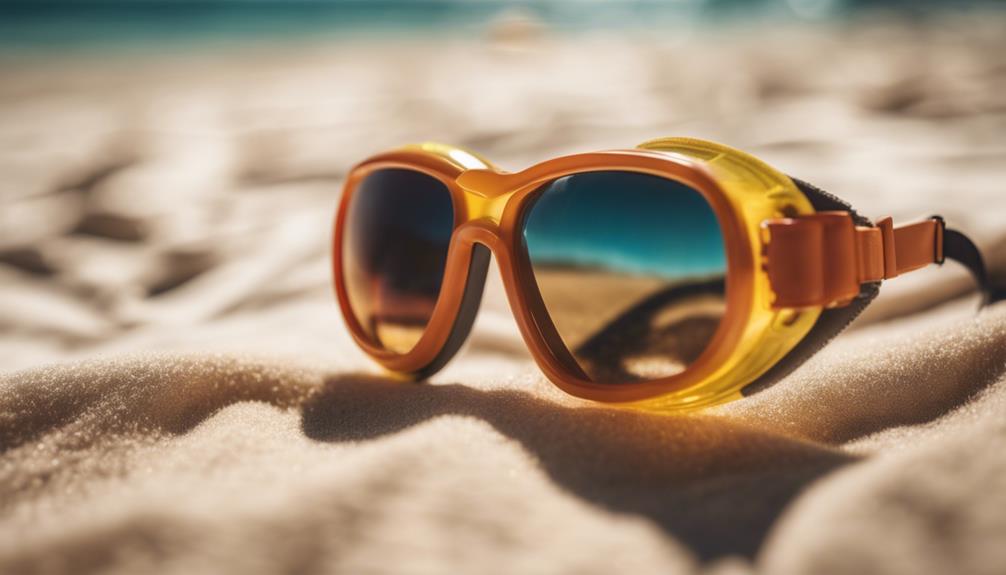
For those who frequently tan, investing in high-quality goggles is essential for ensuring eye safety and comfort during sessions.
Consider the Super Sunnies Evo Flexible UV Eye Protection Tanning Bed Goggles; they block over 99.9% of UVB and 99% of UVA rays, feature an elastic headband for a secure fit, and are FDA compliant.
If you prefer a strapless option, try the Super Sunnies Slim Flex UV Tanning Goggles—they're comfortable and effective but require stillness to stay in place.
For a pack option, the Super Sunnies EVO FLEX UV Goggles 4-Pack offers lightweight designs and flexibility.
Factors to Consider When Choosing
Choosing the right tanning goggles involves evaluating UV protection ratings to guarantee they block over 99% of harmful rays.
When selecting goggles, consider these key factors:
- Fit and Comfort: Check how well the goggles conform to your face shape. Adjustable features can enhance comfort and prevent slippage.
- Material and Weight: Opt for lightweight, durable materials that won't cause discomfort during extended tanning sessions.
- Price vs. Quality: Look for goggles that balance affordability with essential features, ensuring you don't compromise on safety.
Maintenance and Care Tips

Proper maintenance of your tanning goggles guarantees they remain in top condition and provide maximum UV protection.
Start by cleaning the lenses regularly with a soft cloth to keep visibility clear.
Store your goggles in a protective case to prevent scratches and damage when not in use.
Avoid exposing them to extreme temperatures, as this can weaken the material.
It's also essential to check for any signs of wear and tear; if you notice any damage, replace your goggles immediately.
Finally, always follow the manufacturer's guidelines for specific care instructions to extend the lifespan of your goggles.
Taking these steps will guarantee your goggles serve you well during your tanning sessions.
Common Issues With Tanning Goggles
Experiencing discomfort or fit issues with tanning goggles can detract from your tanning sessions, making it essential to be aware of common problems that may arise. Here are three common issues you might encounter:
- Tight Elastic Bands: If the bands are too snug, they can cause discomfort during longer tanning sessions, leading to distraction.
- Fogging: Despite anti-fog coatings, some goggles still fog up, obstructing your view and making it frustrating to maintain a good tan.
- Fit Issues: Certain designs may not accommodate larger facial structures well, leading to UV light leakage, which defeats the purpose of wearing them.
Being aware of these issues can help you choose a better pair and enjoy your tanning experience without interruptions.
Alternatives to Traditional Goggles
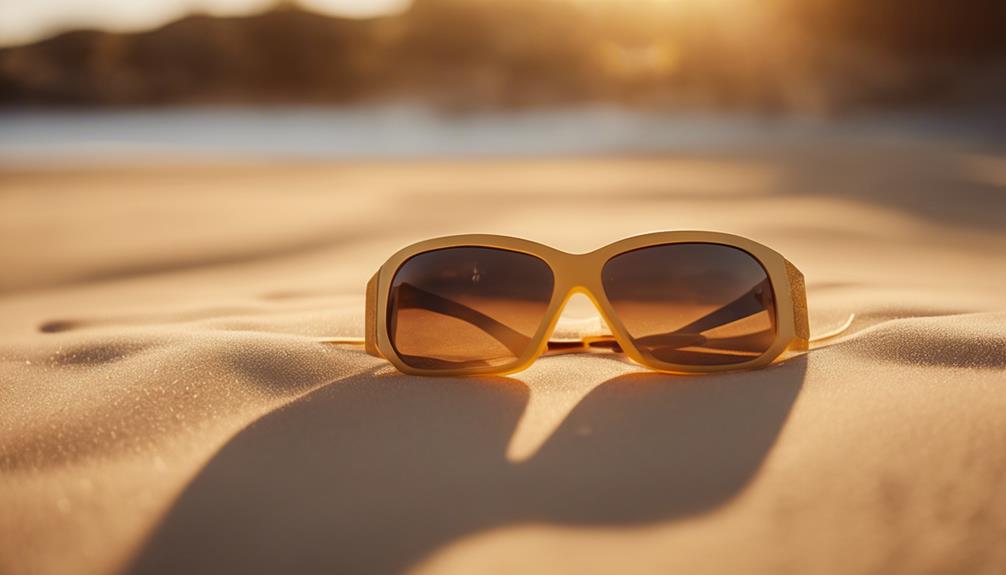
Have you considered other options beyond traditional tanning goggles for UV eye protection? If you're looking for alternatives, UV-blocking sunglasses designed specifically for tanning can provide excellent protection while adding a stylish touch.
You might also explore eye patches or specialized eye covers, which can be comfortable and effective.
Swim goggles with UV protection are another viable option, offering a secure fit in tanning environments.
Additionally, consider protective eyewear made for outdoor tanning activities, as these designs often prioritize comfort and UV safety.
Take some time to research and compare these various options to find what fits you best, ensuring you maintain eye safety without sacrificing comfort or style during your tanning sessions.
Trends in Tanning Goggles Market
The tanning goggles market is evolving rapidly, driven by a growing demand for stylish designs and innovative UV protection technologies.
You'll notice several exciting trends shaping this space:
- Eco-Friendly Materials: Consumers are leaning towards sustainable options, prompting brands to explore recyclable and biodegradable materials.
- Customizable Designs: More brands are offering customizable goggles, allowing you to pick colors or patterns that suit your personal style.
- Advanced Lens Technology: Innovations are enhancing UV protection and visibility, ensuring you stay safe and see clearly during sessions.
These trends not only prioritize safety but also cater to your desire for individuality and environmental responsibility, making tanning goggles more appealing than ever.
User Experience and Comfort
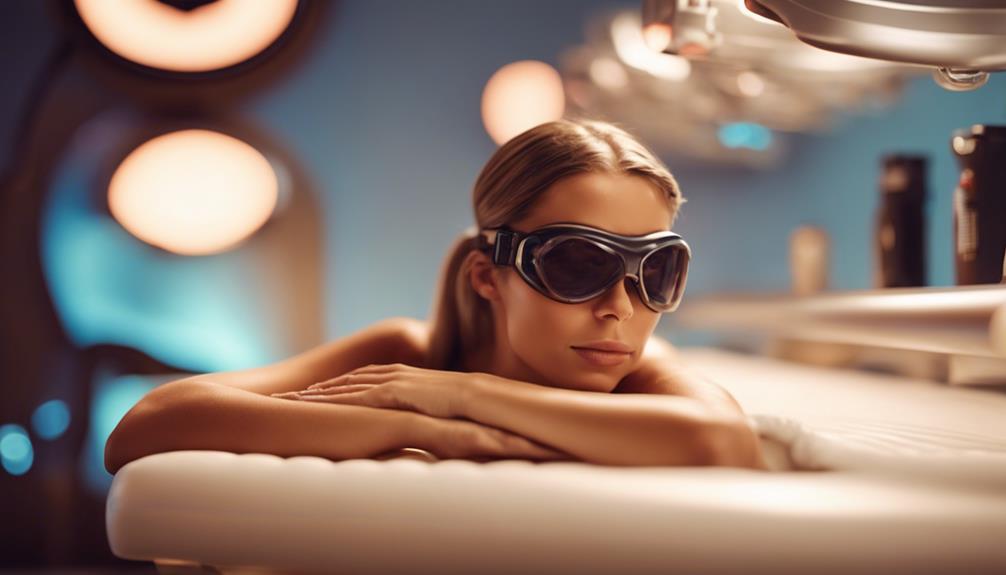
A secure fit is vital for comfort during tanning sessions, as it prevents discomfort and UV light leakage around the edges.
Look for goggles that feature adjustable straps and flexible nose bridges to guarantee a snug yet gentle fit. Lightweight materials are also important; they help reduce pressure on your nose, making extended tanning periods more enjoyable.
Consider your face shape when choosing goggles, as this can greatly affect comfort and effectiveness. Additionally, opt for models with anti-fog capabilities to maintain clear visibility.
Summary of Recommended Products
Finding the right tanning goggles can greatly enhance your comfort and safety during tanning sessions, so here's a summary of highly recommended products to evaluate:
- Super Sunnies EVO Flex UV Tanning Bed Goggles: FDA compliant, blocks over 99.9% UVB and 99% UVA rays, featuring an elastic headband for a secure fit.
- Super Sunnies Evo Flex Soft Tanning Bed Goggles: These come with an anti-fog coating and effective UV protection, plus they're available in an affordable 2-pack.
- EVO FLEX Sunnies Flexible Tanning Bed Goggles: Perfect for smaller face shapes, they boast high-quality construction and vibrant color options.
How Can I Ensure My Eyes are Safe in a Tanning Bed?
When using a tanning bed, it’s crucial to protect your eyes in tanning beds by wearing proper eye protection. UV rays emitted by the tanning bed can be harmful to your eyes and may increase the risk of cataracts or other eye disorders. Always use approved eyewear to shield your eyes from potential damage.
Conclusion
As you commence your tanning journey, think of your goggles as the sturdy shield of a brave knight, protecting your eyes from the fiery dragon of UV rays.
By choosing the right pair, you're not just safeguarding your vision; you're ensuring your tanning experience is both safe and enjoyable.
So, equip yourself wisely, embrace the sunlight, and let your confidence shine as brightly as your golden glow!
Your eyes deserve nothing less than the best protection.

